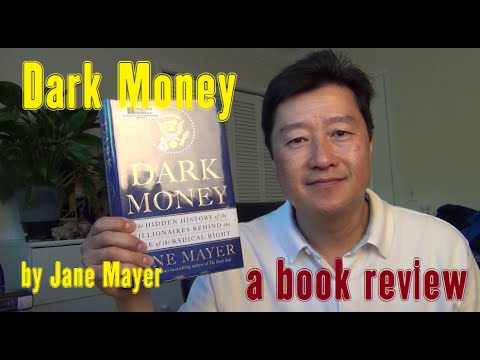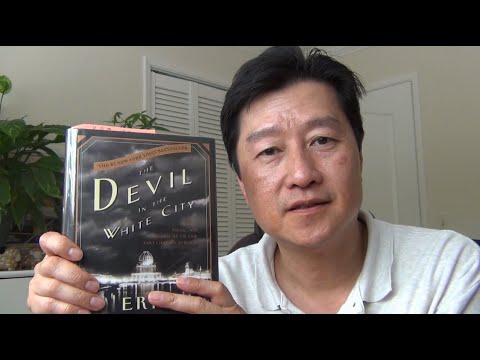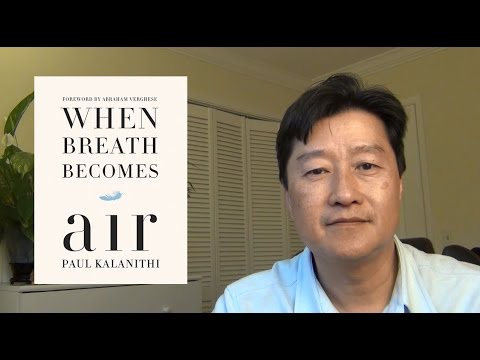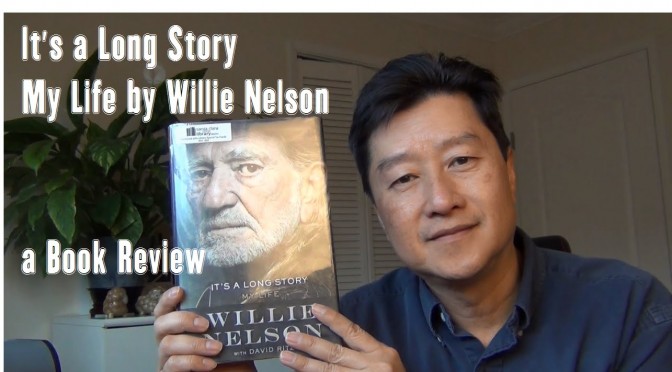5 Things to Know About a Psychopath – the Devil in Human Form
My toastmaster speech about 5 Things to Know About a Psychopath – the Devil in Human Form or H. H. Holmes
The original script is here: I had to cut short some of the contents to meet the 5~7-minute limit of a typical Toastmaster length.
Top 5 things to know about a psychopath – the devil in human form
Be forewarned that my talk today could be rated ‘PG-13’ and ‘R’ for vivid description of crimes. One of my favorite things to watch on TV shows are in crime, detective, thriller genres like Law and Order, Criminal Intent, Law and Order Special Victim Unit, and other reality crime shows like Snapped. If you know of any good detective, crime TV shows or movies, please let me know. The more gruesome the better.
1. Introduction of topic, Holmes, purpose of the talk
The topic of my speech today is “The five things to know about a psychopath – the devil in human form.” The devil I’m referring to here is a physician named, Henry Howard Holmes. He was the most notorious and America’s first serial killer around the end of 19th century, between year 1888 and 1896. Most of the materials come from this book I hold in my hand – “The Devil in the White City” by Erik Larson. The devil here refers to Holmes, who you’ll soon know why he’s called a devil, and the White City refers to the beautiful World Columbus Expo in 1893. In my talk today, I will be focusing on this character, H. H. Holms. I will give a brief biography of Holmes then dive into the key takeaways from how to keep you and your family safe from someone like him.
(show picture)
Once again, I’m NOT here to glorify him or his actions but to learn from his actions and avoid being a victim to someone like him.
2. Brief biography of Holmes
Holmes was born in 1861 in New Hampshire as Herman Webster Mudgett to descendants of early English settlers. Father was a violent alcoholic. He was the 3rd of their 4 children. He excelled in academics, graduated in 1884 from University of Michigan’s Department of Medicine and Surgery after two years at age of 21. While enrolled in school, he would steal cadavers, disfigured the bodies attempting to commit life insurance fraud. You can get away with a lot of things because of No DNA yet in those days. But the insurance companies were pretty good, better than police detectives.
At this time, he already married his first wife, Clara and had one daughter of 4 years old. Luckily for them, their marriage fell apart and Holmes moved to New York working odd jobs, then moved to Philadelphia after a boy died; he denied any involvement. Another boy died after taking medicine from the drugstore where he worked.
To avoid the previous scam victims catching on to him, he changed his name to Henry Holmes before he moved to Chicago in 1886. While still married to Clara, he married Myrta and had a daughter in a different town, freeing him to tend his “business” in Chicago.
In Chicago, he got a job in a drug store and “bought” the store from the widower of the owner after Mr. Holten died. The widower disappeared, presumably killed by Holmes.
He then purchased an empty lot across the drugstore and built his three-story, block-wide hotel. It was so huge that it was called “The Castle” – later was called the “Murder Castle.” There were many rooms with some doors opened to brick walls, or can be opened from outside only. He event built a special life-size kiln like crematorium in the basement. There were special rooms where he did his evil deeds: a soundproof, air-tight room where he gassed his victims, and solid brick room with a trapdoor from the top where victims died of hunger or thirst and another secret hanging chamber.
His victims include his mistresses, employees or ex-employees, hotel guests. Keep in mind that in 1893, Chicago hosted the largest World Expo Exhibit where more than 26-million visitors attended the 200+ beautiful architectural master pieces including the first Ferris Wheel that is 24-story high. The chaos of city during the expo contribute to his playground as police was too busy to care about missing-person cases.
His fall came when he conveniently killed his helper, Benjamin Pitezel, for real after conning him into playing the life insurance scam. Pitezel kind of deserve it as he helped Holmes get rid of bodies by articulating the body, meaning stripping the skin and flesh off, then sell the remaining skeleton to doctors.
Then he proceeded to take his three children on a long trip, murdering one after another along the trip all the way to Toronto.
He was arrested in 1894, tipped off by a former cellmate whom Holmes neglected to pay off after an insurance scam. He was convicted of murdering his helper, Pitezel.
Overall, only 9 murders were confirmed but the number of victims has been estimated between 20 and 100. Holmes confessed to 27 murder before his death, some of them turned out alive.
3. Top 5 things to recognize a psychopath
The disclaimer here is that not all psychopaths are criminals or murders and not all criminals or murders are psychopaths. But psychopaths, in my opinion, is the most insidious kind because they’re easily among us, ready to strike.
1. Superficially charming: Possessed with a pair of blue eyes, charming, and seductive demeanor, he charmed many young girls into going home with him. Most of his drugstore customers were women and only ask for help.
2. Lying pathologically: Holmes lied about his names: it was Herman Mudgett, Henry Howard, Henry Gordon, Alexander Bond but mostly Henry Howard Holmes. He lied about his ancestry claiming belonged to a royal family in Europe. He lied about the where about of disappearing wife or girlfriends like marrying others to a foreign country. He lied about his wealth. At the end he lied about who he killed; I think he lost count himself.
3. Conning and manipulative: he keeps hiring and firing construction workers in building his castle and a human-size kiln, where he lured, murdered and cremate dozens of faire visitors. He tricked several people into taking out life insurance with him as the beneficiary.
4. Lack of remorse or guilt: he never showed any remorse for what he has done. He wrote a memoir while in jail to plead his innocence and make money off his notoriety.
5. Inflated sense of self worthy: he claimed to be the devil. He once declared “I was born with the devil in me. I was born with the evil standing as my sponsor beside the bed where I was ushered into the world, and he has been with me since.”
4. The end of a killer
Holmes was convicted of 4 counts of murder in the first degrees, executed by hanging in 1896 at age of 34. He remained calm and charming until his moment of death.
Good news! The story of the “Devil in the White City” is being filmed and will be coming to a theater near you soon. The person who plays Holmes will be none other than the Best Actor of the last year’s Oscar – Leonardo DiCaprio, the same actor in, Titanic, Catch If You Can, Wolf of Wall Street, and The Revenant. It’s going to be good one. Can’t wait!
I hope you come away from my speech with better understanding of these five character traits of a psychopath to help you and your family safe from them. And if you happen to have these traits, I probably don’t want to know.
Book Review: “Dark Money: The Hidden History of the Billionaires Behind the Rise of the Radical Right” by Jane Mayer
The world and America seem to be moving toward the socialism for the last few decades. Of course, it didn’t happen in a straight forward manner. It’s like a pendulum that swung left and right every few years or so, depending on which party was in power. But now there is a few billionaire trying to change the course or slow down the move. Their money, or so-called “Dark Money,” were funneled to tax-free, politically-influenced foundation to fund the “conservative” movement. This is the story about them written by a mostly-liberal (leftist) writer, Jane Mayer.
The book started out in an emergency, secret meeting among the billionaires during Obama’s inauguration. There as a sense of urgency and despair on what Obama’s administration is capable of spreading – classic socialism.
The book gets very repetitive and boring toward the end, but a good book if your political view lean towards the left. Not so for the “right”-minded.
The Koch brothers of the Koch Industries, Charles and David Koch played a huge role in the movement. The book went in great details of the Koch family and the patriarch, Fred Koch’s early business success through his connection to Hitler in building Hitler’s first oil refinery, a history that was buried and hidden from the public view. Of course, Fred’s early success paved the way the Koch family’s follow-on success in oil exploration field and becoming the second biggest private company in the U.S.
There were some stories about the upbringing of Charles, David Koch and the family feud among the brothers, especially between Frederick Koch, the unmarried single, vs. David and Charles. There were lawsuits against one another.
The Koch brothers seemed to have benefited the most from the last 8 years of Democrats stewardship, thanks to the bail out of 2008 started during George W. Bush’s presidency.
The book is separated into three parts in chronological order:
Part one is about “weaponizing” philantropy: the war of ideas frm 1970 to 2008. Part two goes into the “secret sponsors: covert operations” from 2009 to 2010. The final part three goes into the total combat: privatizing politics – a new battle plan.
This is a good book if you’re into politics. Not me. Don’t have the stomach for the silly political child plays.
Book Review: “The Devil in the White City” by Erik Larson
Two characters in this wonderfully written book – The Devil in the White City” by Erik Larson. The first character is Henry H. Holmes, a physician, a good liar but mostly a cold-blooded psychopath murderer. The other character is Daniel Burnham, a master architect that orchestrated the building of the many beautiful architectural wonders in the World Faire in Chicago in 1893. The connection between the two characters are not strong other than they happened to live in close proximity in the same neighborhood during the fair.
It’s a great book for people curious how the World’s Columbian Exposition – its beginning and the end and the people, the architects, the politicians who made it happen. Of course, you get to know about the two main characters in the book: H. H. Holms and Daniel Burnham. Very well researched and written. Always enjoyed Erik Larson’s book.
10 things you need to know about Henry Holmes:
1. He was charming, handsome with beautiful set of blue eyes and seductive to innocent young women. He could come up with many impressive lies like his name (loyalty connection), wealth (mostly borrowed), position (doctor) and his caring and benign demeanor.
2. A master of turning the attack around (Aikido): When confronted with his fraud or lies, he responds in gentle and good counter lies that seem to make the accusers apologetic.
3. Leaves little evidence (by the old standard). He’s adept at destroying the evidence. Having a custom gas chamber/vault and a crematorium in the basement allowed him to murder and get rid of bodies without incurring too much notice from others.
4. Uses little force. Hi modus operandi is mostly through trapping the person in a chamber and inject an nerve gas (chloroform) to kill.
5. Takes advantage of the environmental factors: a. Lots of visitors going into and out of the World Faire – police officers were too busy to handle missing people case. b. Living in a era where cadavers are difficult to acquire and bodies can be easily stolen, articulated, and acquired without too much scrutiny.
6. He has help: Pitizel, who and whose children he eventually murdered and got convicted of the crime. Ironic.
7. Got braver and braver when uncaught with murder one after another.
8. Never admitted to any crime but eventually equating himself to a devil as he saw himself physically evolving into one.
9. Henry H. Holmes was finally executed by hanging in 1896, after murdering confirmed 9, confessed 27 and up to 200 estimated, started as early as 1888.
10. He is a devil. Even he thought so himself: “I was born with the devil in me. I could not help the fact that I was a murderer, no more than the poet can help the inspiration to sing — I was born with the ‘Evil One’ standing as my sponsor beside the bed where I was ushered into the world, and he has been with me since.”
– H. H. Holmes[29][30]
On Burnham, here are the 5 things you need to know about him:
1. He organized and successfully completed the entire World Faire of 1893 just with 2 short years despite his poor health. The team had to overcome significant setbacks like the poor soil quality, political influences to bias the designs, and etc.
2. He knows how to hire the best people for the job. Frederic Olmsted for the landscaping, and John Root, his partner to architect the entire ground. When Root died in the middle of construction, he had to pick up the chief architect work.
3. Burnham was indicted when one of the buildings caught fire. Ironically, the attendance picked up after the fire which seemed to draw onlookers.
4. Despite the artistic success of the World Faire Buildings, the financials were not so good. Burnham had to face many inquiries and restrictions toward the end of the expo as the World Faire didn’t make enough money to pay for itself.
5. Burnham fostered the early thinking of an eco-responsible architecture. He was concerns with waste of building materials.
Bejolted – My Life Journey
I recently joined the Toastmaster Club at my work. Finally gathered enough courage to give my first speech today. The evaluation was done by Scott Yam, a colleague and fellow toastmaster club member. Looking forward to get more practices under my belt.
Book Review: “When Breath Becomes Air” by Paul Kalanithi
It’s the sad ending to a neurosurgeon doctor, Paul Kalanithi who found himself becoming a cancer patient, at the end of his 7-year residency. Writing out his journey through the detection and attacking the lung cancer with regiments of chemo and radiation therapies and going back to finishing up the residency and getting his physician license, but then fell ill again and finally succumbing to cancer in 2015. Through this time, he saw the birth of his baby girl. It’s an emotional roller coaster journey with a sad ending. It’s a good book for someone or family members who’s undergoing the same situation.
My key takeaways from this book:
– The hectic pace of the residency, especially for a neurosurgeon, may have contributed to his cancer. Unfortunately, being on top of his field, Paul was too competitive to let go and even went back to perform surgery after going through the therapy and during the remission of his cancer. I don’t know if it’s such a good idea to do that. Life style and career change may be required for someone like that. He paid a huge price for and a great loss of his potential patients.
– Paul is great in writing, having been torn between literature and medicines. It’s natural for him to pursue medicine as his dad and a few of his relatives are ones. Hard for me to imagine how one masters such combined skills in diametrically opposite fields.
– Going from a physician to a patient put him on both sides of tables. He saw both perspectives very clearly. For example, he was asked not to worry about the mortality curve by his oncologist, going against his physician judgement and yet it’s something he could appreciate as a patient when the odds are stacked against him.
– Growing up in a small Arizona because of his dad’s relocation, made him a good wildlife observer and paved his way to becoming a doctor, a darn good one given his attending one of the best medical schools – Stanford and the accolades he received at the end of his residency. He could’ve garnered more than $1M in annual salary! What a heart breaker!
– Paul’s writing stopped about a few months before he passed away. But his wife continued in writing about the last few days of his life.
– Paul’s writing was mesmerizing and touching. Unfortunately, we will not be able to see more of them. It did leave many of us with better understanding of the battle against cancer to be better prepared if one would to encounter one. My heart goes out to his wife, his baby girl, and his family.
This is a fine book for someone who’s on top of the world and near it. The view may be great and the way down may be treacherous. Stay true to your course but don’t forget to enjoy a bit, you never know what tomorrow brings.
Book Review: “It’s a Long Story – My Life” by Willie Nelson
It’s always pleasant to read a genuine, down-to-earth, creative person’s life story. In this case, it’s Willie Nelson, the famous country, blue, jazz, (or other labels) singer and composer.
– Willie Nelson is one creative soul. How does he do it? At his age of 82, he has cranked up more than 68 albums.
– “To all the girls he loved before.” Willie did have lots of women in his life. There seemed to be a pattern for the famous singer.
– He used his creativity in tackling the IRS tax problem by facing the IRS head-on without declaring bankruptcy against his friends’ best advises. He sold albums to pay off his debts.
– Willie Nelson shows that you don’t have be branded as a country music singer or a pop star as long as you master something (music) that you’re passionate about and keep doing it, evolving it with creativity. A great lesson for all.
– His love for pot, marijuana, as the best “medicine” to take edges off with little downside under stress as cigarettes killed both of his parents and alcohol has too much side effect for. He even campaign for its legalization.
– Singing covers for some of the old songs went against the pundits’ advises and proved them wrong.
– Before his musical success, he had to sell encyclopedias which he didn’t feel good about despite his success as a salesman. He tried selling vacuum cleaners instead to ease his conscience.
– Willie moved around to try different markets like Texas, Tennessee, Colorado, Oregon and Los Angeles. He’s very gutsy and willing to try different things – this is the key to success. Keep moving and keep reinventing.
– Despite his success, Willie never forget his root; he had a home in Abbot, Texas, where he was born and raised.
– I got to familiarize some of his songs – some are popular and some are not.
– He mentioned a lot about his friends like Waylon Jenning, Jimmy Carter, Ray Charles, Johnny Cash, Merle Haggard, and a few others.
– Like a good country music. Willie Nelson tells a good, long story of his life in this book. It’s a good read for those who admire his work, music and his good character.







